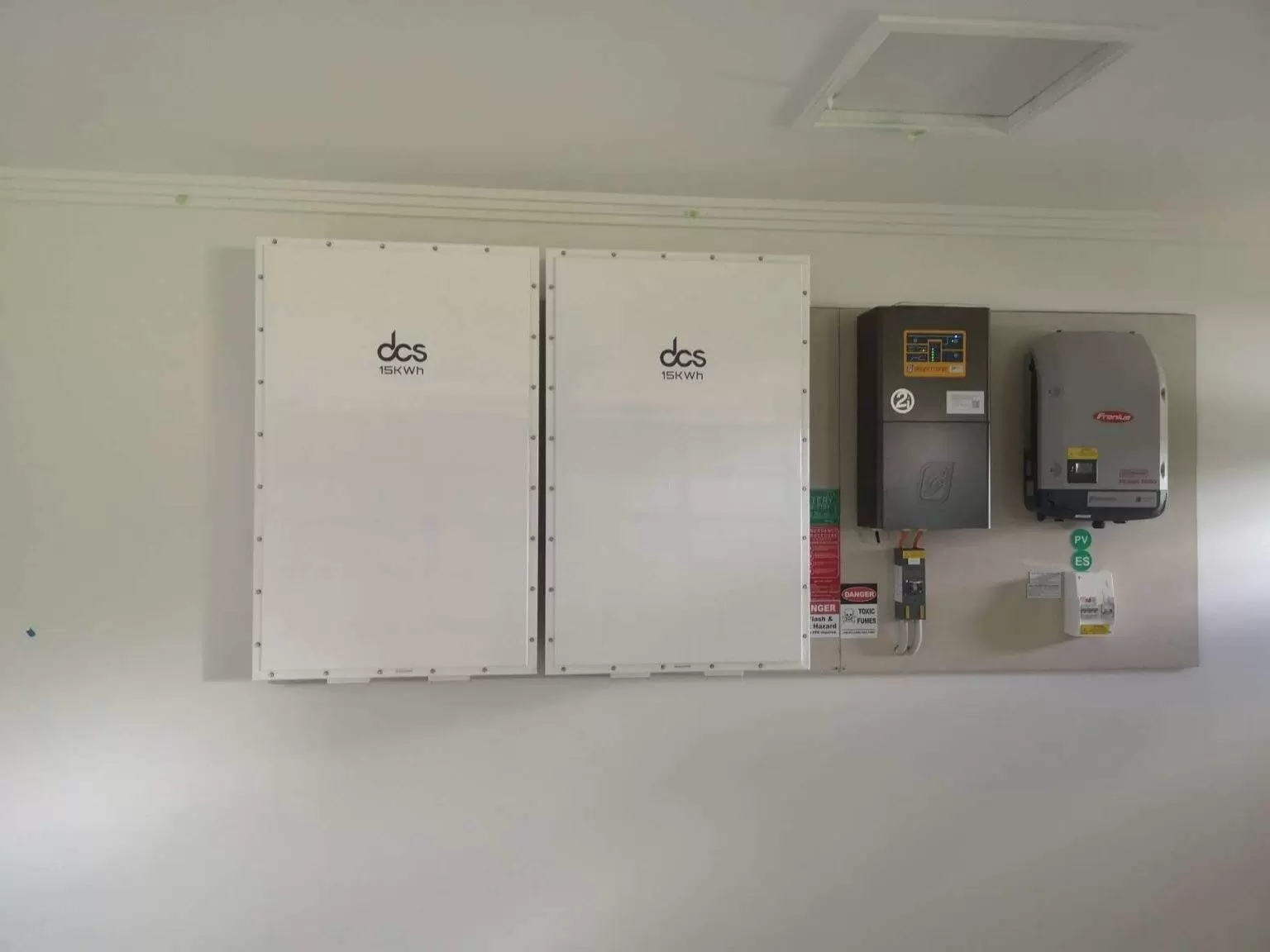Are you ready to harness the sun’s power with your solar energy system? One crucial element between your photovoltaic (PV) panels and a reliable, uninterrupted electricity supply is batteries. Choosing the right batteries for PV panels is essential for maximizing efficiency and ensuring that you get the most out of your investment.
With so many options on the market, it can be overwhelming to determine which type will best meet your needs. Whether you’re looking to reduce reliance on grid power or simply want backup energy during outages, understanding how to select the ideal solar package is key.
Understanding the Different Types of Battery for PV Panels
When it comes to batteries for photovoltaic panels, understanding the different types is essential. Each type has unique characteristics suited for various energy storage needs.
1. Lead-acid batteries
Lead-acid batteries are the most common type of battery used for PV panels. They have been around for decades and are known for their reliability and affordability. These batteries consist of lead plates submerged in an electrolyte solution of sulfuric acid. Lead-acid batteries are available in two types: flooded and sealed.
2. Flooded lead-acid batteries
Flooded lead-acid batteries require regular maintenance, such as adding distilled water to the cells, while sealed lead-acid batteries are maintenance-free.
3. Lithium-Ion Batteries
Lithium-ion batteries have gained popularity recently due to their high energy density and longer lifespan than lead-acid batteries. They use lithium ions to store energy instead of lead plates, making them lighter and more compact. However, they can be more expensive than lead-acid batteries.
4. Nickel-Cadmium Batteries
Nickel-cadmium (Ni-Cd) batteries were once a popular choice for PV panel storage but have now been largely replaced by lithium-ion batteries due to their lower energy density and higher cost. Ni-Cd batteries also require regular maintenance and can be toxic if not disposed of properly.
Factors to Consider When Choosing Battery for PV Panels
Several key factors come into play when selecting a battery for your PV panels. First and foremost, consider the capacity of the battery. This refers to how much energy it can store, which directly impacts your system’s performance.
1. Battery Chemistry
The battery’s chemistry is essential to consider as it determines its performance and lifespan. Some common PV system battery types include lead-acid, lithium-ion, and saltwater batteries. Lead-acid batteries are generally cheaper but have a shorter lifespan and require more maintenance.
2. Capacity
Capacity refers to the amount of energy a battery can store, measured in kilowatt-hours (kWh). Choosing a battery with enough capacity to meet your energy needs is essential. Consider how much energy your PV panels produce and how much energy you consume on average.
3. Depth of Discharge (DoD)
Depth of discharge refers to how much of the battery’s total capacity can be used before recharging. For example, a battery with a DoD of 80% means that only 80% of its total capacity can be used before recharging.
4. Cycle Life
Cycle life refers to the number of charge/discharges cycles a battery can undergo before its capacity starts to degrade. This is an important factor to consider as it directly affects the lifespan of your battery. A higher cycle life means that the battery can be charged and discharged more times before needing to be replaced.
Types of Solar Battery Pack
When exploring solar battery packs, knowing the different types available is essential. Each type serves a unique purpose and fits varied energy needs. Lithium-ion batteries are popular for their efficiency and longevity. They charge quickly and have a high energy density, making them suitable for residential use.
Lead-acid batteries come in two primary forms: flooded and sealed (AGM or gel). While they are generally more affordable, they tend to have shorter lifespans than lithium options. Flow batteries offer an innovative approach by using liquid electrolytes stored externally. This allows for flexible scaling based on your power requirements.
Sodium-sulphur batteries provide excellent performance at high temperatures but may be less common in everyday applications due to cost considerations. Understanding these options helps you make informed choices tailored to your specific energy demands.
Longevity of Battery for PV Panels
The longevity of batteries for PV panels is crucial in determining your solar system’s overall efficiency. Different battery types generally exhibit varying lifespans, influenced by usage and environmental factors.
Lithium-ion batteries often last the longest, with some models exceeding 10 years or more under optimal conditions. Their ability to handle deep discharges without significant degradation makes them popular among users seeking durability.
While lead-acid batteries are generally less expensive upfront, they typically have shorter lifespans—often around 3 to 5 years. Regular maintenance can help extend their life, but it requires commitment and diligence.
Temperature also plays a vital role in battery longevity. Extreme heat or cold can significantly shorten lifespan. Monitoring these conditions is essential if you want your investment to pay off long-term.
Choosing quality products from reputable manufacturers not only ensures better performance but also contributes positively to the lifespan of your battery package.
Tips for Properly Installing and Using PV Panel Batteries
Proper installation of your PV panel batteries is crucial for optimal performance. Start by choosing a well-ventilated area to prevent overheating, which will help prolong the batteries’ lifespan.
Always follow the manufacturer’s guidelines for wiring and connections. Use quality cables that can handle the required current without overheating.
Monitor battery levels regularly. Keeping an eye on charge status helps you catch potential issues early, ensuring efficiency in energy storage. Avoid deep discharges whenever possible. Regularly letting your batteries drop below 50% can significantly shorten their life.
When using battery packs, ensure they are compatible with your existing system components to avoid performance bottlenecks or damages. Clean connections and terminals regularly to prevent corrosion, which can hinder electrical flow and affect overall functionality over time.
Making the Right Choice for Solar Battery Package Needs
Choosing the right solar battery package is crucial for maximizing your energy system’s efficiency. Start by assessing your energy consumption patterns. Knowing how much power you need will guide you in selecting a suitable battery capacity.
Consider different batteries’ depth of discharge (DoD) and cycle life. These factors determine how effectively they store and release energy over time. Lithium-ion options often offer higher DoD, allowing more usable power. Next, evaluate compatibility with your existing PV panels and inverter systems. Not all batteries work well together, so ensure that components are compatible to avoid performance issues.
Think about your budget and long-term investment goals. Cheaper options may save money initially but might provide different durability or efficiency than premium packages over time. Always weigh immediate costs against potential savings in maintenance and replacements.
Tips for Maximizing Battery Life
To maximize the life of your batteries for photovoltaic panels, start by maintaining a balanced charge cycle. Avoid deep discharging your batteries; keeping them above 50% capacity can significantly extend their lifespan. Temperature control is crucial. Store and operate your battery pack in a calm, dry environment to prevent overheating. Excessive heat can accelerate degradation.
Regular maintenance checks are also essential. Inspect connections for corrosion or looseness, which can impact performance. Consider using a smart charging system to optimize how energy flows into your battery package. These systems adjust charging rates based on current conditions and battery health.
When installing your batteries outside, limit exposure to extreme weather conditions. Weatherproof enclosures or dedicated storage spaces will shield them from harsh elements while ensuring efficiency continues year-round.
Conclusion
Choosing the right batteries for PV panels is crucial to optimizing solar energy systems. The type of battery can significantly impact performance, efficiency, and longevity. Understanding your specific needs will help you select an appropriate solar battery. Consider factors such as energy storage capacity, depth of discharge, and charging cycles. Taking proper care during installation also plays a vital role in ensuring durability. Regular maintenance checks can further enhance battery life and efficiency. With the correct information at hand, making informed decisions becomes more manageable.
FAQs
What types of batteries for PV panels are best suited for solar power systems?
The most common types of batteries for PV panels include lead-acid, lithium-ion, and saltwater batteries. Lithium ion offers high efficiency and a longer lifespan but comes at a higher initial cost.
How long do solar batteries typically last?
Battery longevity varies with technology; lead-acid batteries may last 3-5 years, while lithium-ion options often extend up to 10 years or more with proper care.
Can I use my existing car battery in my solar setup?
It’s generally not advisable since car batteries aren’t designed for deep cycling, as required in a solar application. For optimal performance, a dedicated solar setup battery pack is recommended.




